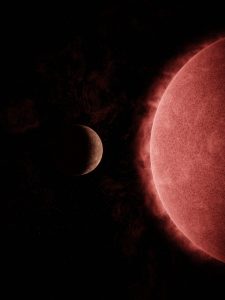Although significantly more common in the Universe, ultra-cool dwarf stars remain poorly understood due to their low luminosity. Consequently, our understanding of their planetary population remains limited, even though they represent a substantial fraction of the planets in our Milky Way. It is in this context that the SPECULOOS program was developed, aiming to explore exoplanets around this type of star.
Thanks to this program, an international team of researchers, including the CEA, has just discovered a new planet: SPECULOOS-3 b. Earth-sized, it orbits the ultra-cool dwarf SPECULOOS-3, located 55 light-years away. This discovery marks the second planetary system identified around this type of star, following the famous TRAPPIST-1 system, also detected through this observation program.
The characteristics of SPECULOOS-3 b make it one of the most promising rocky exoplanets for detailed characterization through emission spectroscopy with the JWST’s MIRI instrument. Its sensitivity is expected to provide significant constraints on the planet’s atmospheric composition or surface mineralogy, if applicable.
This discovery was published in the journal Nature Astronomy.
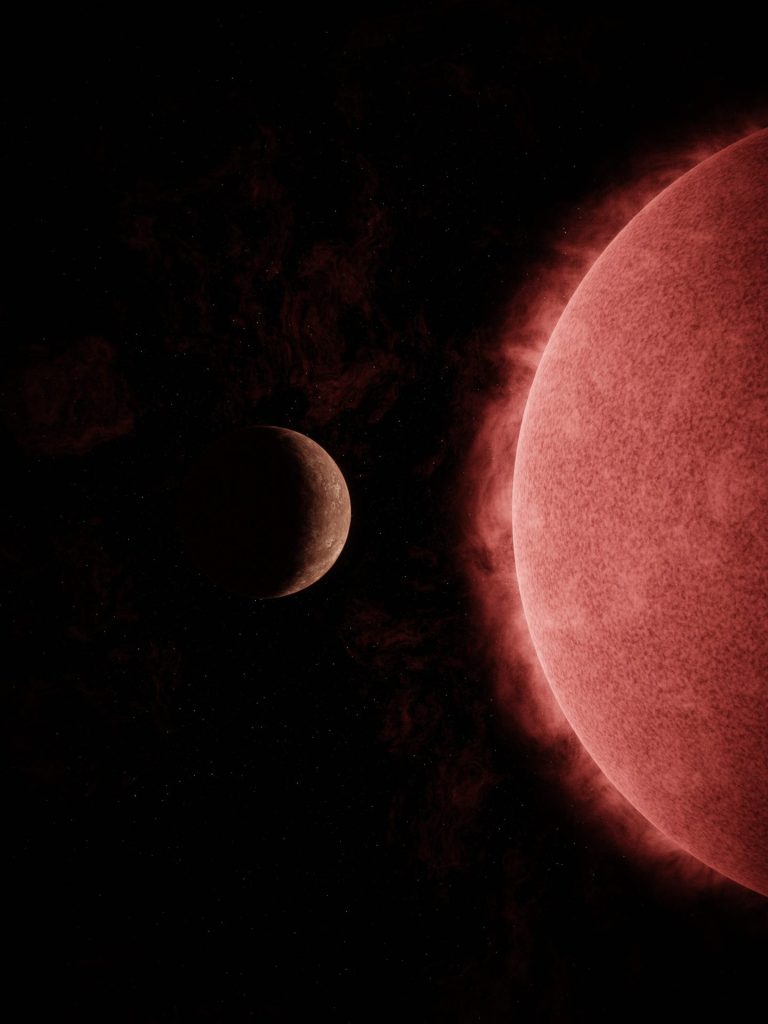
The SPECULOOS program
Ultra-cool dwarfs are the least massive stars in the Universe. Comparable in size to Jupiter, they are less than twice as hot, ten times less massive, and a hundred times less luminous than our Sun. However, their lifespan is more than a hundred times longer than that of our star, which will make them the last shining objects when the Universe becomes cold and dark. Although they are significantly more numerous than Sun-like stars, these stars remain largely misunderstood due to their low luminosity. Similarly, we know very little about their planetary population, which is nevertheless abundant in our Milky Way.
To have a good chance of detecting transiting planets around these stars, it is necessary to observe them individually for weeks. The SPECULOOS program (Search for Planets EClipsing ULtra-cOOl Stars), conducted jointly by the Universities of Liège, Cambridge, Birmingham, Bern, MIT, and ETH Zurich, is a network of professional robotic telescopes dedicated to the search for exoplanets around the nearest ultra-cool dwarf stars (see Figure 2).
“We designed SPECULOOS specifically to observe nearby ultra-cool dwarf stars in search of rocky planets suitable for detailed studies,” says Laetitia Delrez, an astronomer at the University of Liège. “In 2017, our SPECULOOS prototype using the TRAPPIST telescope discovered the famous TRAPPIST-1 system, composed of seven Earth-sized planets, several of which are potentially habitable. It was an excellent start!”
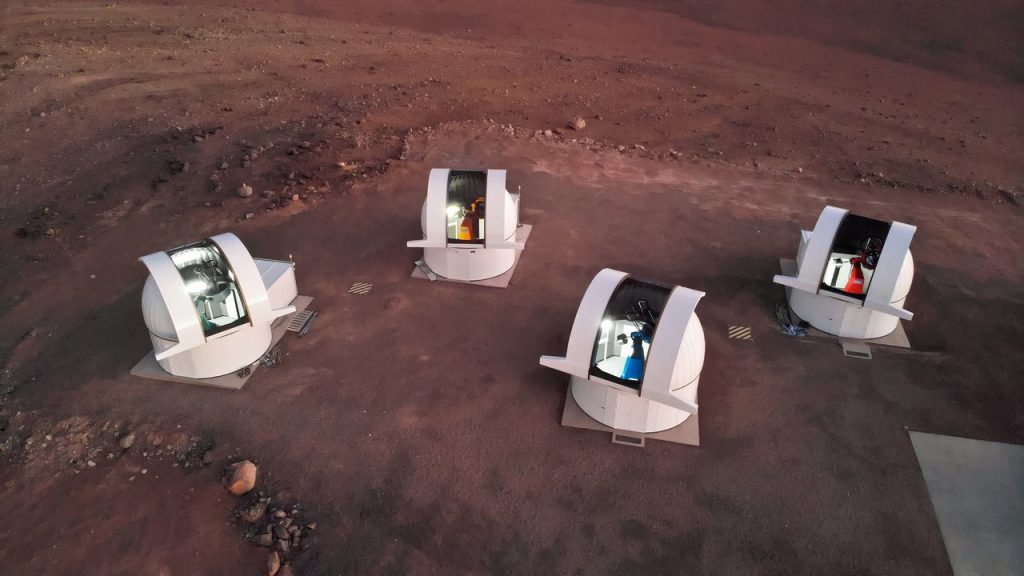
SPECULOOS-3 b: an exciting discovery!
The SPECULOOS program has just announced the discovery of a new Earth-sized planet orbiting the ultra-cool dwarf star SPECULOOS-3. This is only the second planetary system discovered around this type of star. This discovery was made using the transit method, which involves observing a decrease in the star’s brightness when a planet passes in front of it (see Figure 3).
The exoplanet SPECULOOS-3 b is located about 55 light-years from Earth, which is relatively close considering that our galaxy, the Milky Way, spans 100,000 light-years. It is almost the same size as our planet. A year, or one orbit around the star, lasts about 17 hours. The planet is thought to be in synchronous rotation, so the same side, the day side, always faces the star, similar to how the Moon always shows the same face to Earth. The night side would thus be plunged into endless darkness.
The star SPECULOOS-3 is 8 times smaller than our Sun and twice as cool, with an average temperature of only 2,600°C. However, due to its proximity to its star (55 times closer than Mercury is to the Sun), the planet SPECULOOS-3 b receives nearly 16 times more energy per second than Earth receives from the Sun, subjecting it to a continuous bombardment of high-energy radiation. Consequently, researchers estimate its equilibrium temperature to be 280°C, comparable to Mercury’s temperature, which ranges from -170°C to 400°C due to its non-synchronous rotation.
“In such an environment, the presence of an atmosphere around the planet is very unlikely,” explains Julien de Wit, a professor at MIT and co-director of the SPECULOOS Northern Observatory and its Artemis telescope. “This presents several advantages and paves the way for a better understanding of ultra-cool dwarfs and their potentially habitable planets,” he adds.
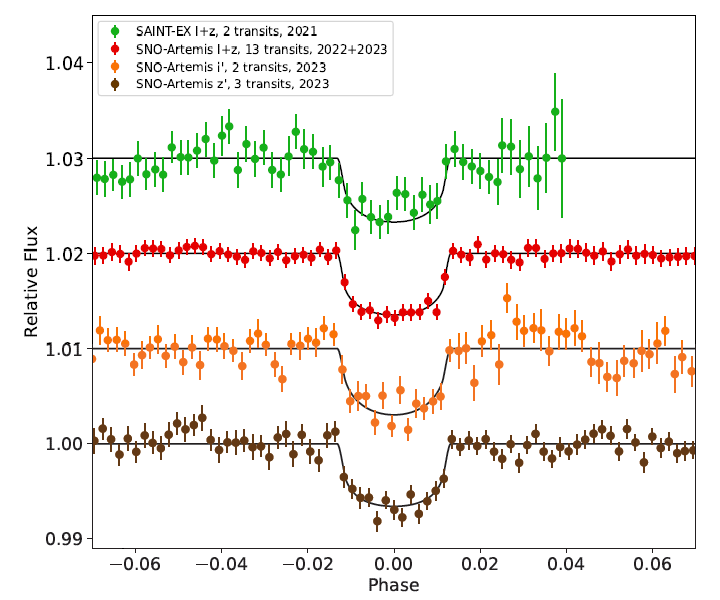
A promising target for the James Webb Space Telescope
SPECULOOS-3 b is positioned as one of the most promising rocky exoplanets for detailed characterization through emission spectroscopy with the JWST.
“With the JWST, we could even study the mineralogy of the planet’s surface!” says Elsa Ducrot, a former researcher at CEA-Saclay, now at the Paris Observatory.
Its high temperature ensures a strong signal, and its short orbital period makes it possible to observe several secondary eclipses, i.e. just before and just after the planet passes behind the star. (see Figure 4). In this configuration, the illuminated side of the planet is visible, allowing us to obtain its emission spectrum. According to this study’s estimates, only ten observations of the planet’s secondary eclipses with the JWST’s MIRI/LRS instrument would be enough to provide significant insights into its atmospheric composition or surface mineralogy, if applicable.
“This discovery demonstrates the capability of the SPECULOOS program to detect Earth-sized exoplanets. And this is just the beginning! Thanks to financial support from the Walloon Region and the University of Liège, two new telescopes, Orion and Apollo, will soon join Artemis on the Teide volcano plateau in Tenerife to accelerate the hunt for these fascinating planets,” concludes Michaël Gillon.
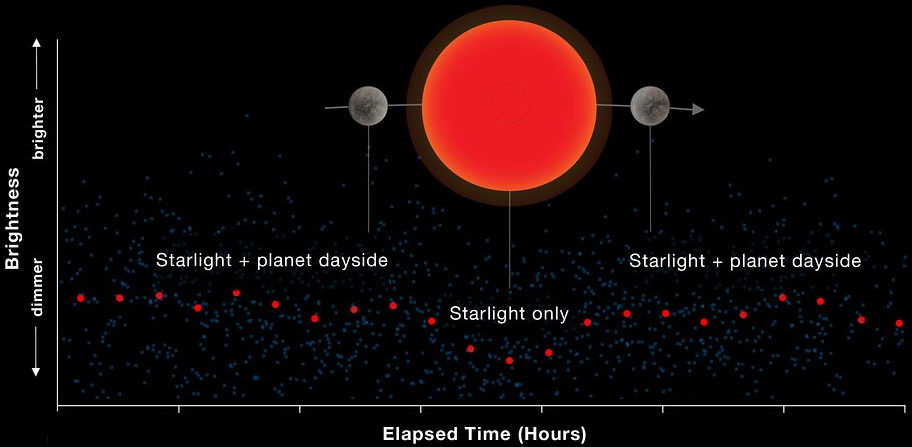
Contact: Elsa Ducrot
Further information:


